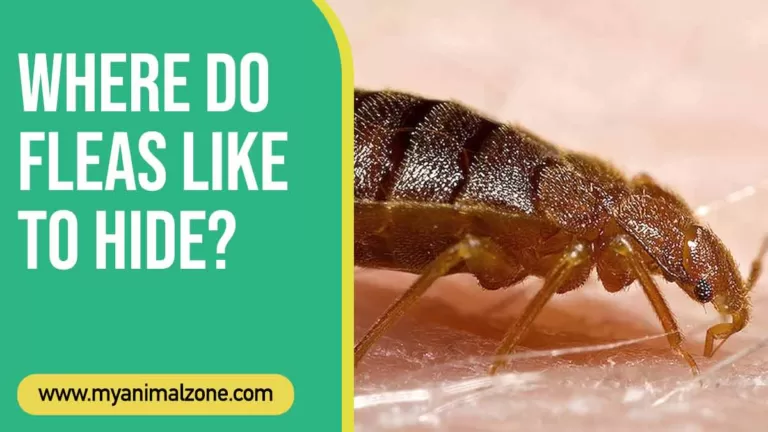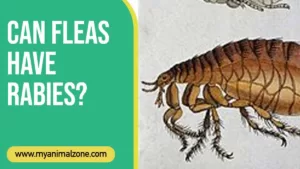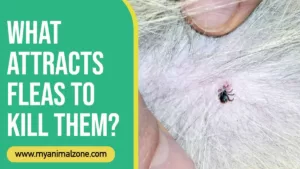Where do fleas like to hide? This is a common yet difficult question that many pet owners grapple with. Flea infestations can be a major issue for pet owners, leading to itching and even allergic reactions for pets.
By understanding where fleas may be hiding, you can get ahead of the problem and prevent them from taking hold in your home. In this blog post, we will go in-depth into where fleas like to hide and provide useful tips on how best to fight back against these troublesome pests.
Flea Habitats
Fleas love peaceful places but can quickly infest your home; knowing where they reside to control and prevent flea infestations.
Common flea habitats:
- Carpeting: Fleas live deep in the fibers and near baseboards and the floor.
- Upholstery: Look for them in couches, chairs, beds, and cushions, especially soft fabrics.
- Cracks and crevices: Check baseboards, under carpets, behind furniture, or between floorboards.
- Pet bedding: Fleas love warm, close-by areas to jump onto their host. Check pet bedding thoroughly if present.
Carpeting
Fleas are skilled at concealing themselves and often use your carpet as their hideaway. After fleas lay eggs, the larvae scurry away from light sources to deeper floors, such as carpets or rugs, where they’ll wait for a suitable host before hitching a ride. Make sure you inspect these areas vigilantly if you notice any signs of infestation!
Cracks and Crevices
Even if you don’t have carpets, fleas, and their eggs could still be present. These pesky pests can slip through even the tiniest spaces on hardwood or tile flooring, around baseboards, and other crevices. Vibrations from walking across these surfaces may cause flea eggs to hatch – leading to larvae being found in such places!
Upholstery
Fleas can also lurk in your home furniture, bedding, and other fabrics. They can hide away in the seams of couches or mattresses and may even find their way onto pet beds or clothing! Vacuum your upholstered surfaces regularly to help reduce the risk of flea infestation.
Pet bedding
Another area to keep an eye on is pet bedding. Even if you’re regularly washing and vacuuming your pet’s bed, fleas may still find their way in. Regularly inspect the area for any signs of activity and clean it thoroughly each time.
It’s important to be mindful of the environment around your home regarding flea prevention. You can help ward off these pesky pests from entering your living space by correctly utilizing light and heat sources. Additionally, regularly inspecting pet bedding and upholstered surfaces will assist in keeping fleas at bay!
How Do Fleas Get Inside?
Fleas are little, wingless insects that live off their hosts, like cats and dogs. They can enter your home by coming in on you, your pet, or other animals. Fleas like carpets, furniture, and bedding – places to lay eggs and breed.
These pests go from room to room, looking for food. The beds and couches used more often by pets are their favorites to hide and lay eggs. Carpets have many fibers for hiding and laying eggs, but wood floors and tiles may be safe if undisturbed. Fleas can also hide in closets and drawers because they’re warm and dark.
Check the following for fleas:
- Curtains
- Upholstered furniture
- Window treatments
These spots can hold adult fleas and larvae looking for food. Vacuuming carpets helps, but you must also address outdoor access points to eliminate the fleas.
Signs of a Flea Infestation
Fleas don’t usually live on humans, but they still happily bite them and other animals to feed on their blood. Getting rid of fleas once they’ve infested a home is challenging due to their fast reproduction rate and hidden spots. So if you spot signs of fleas, take action quickly!
Signs of fleas include:
- Your pet scratching/biting fur too much
- Small dark spots (flea dirt, dried blood)
- Adult fleas/larvae in hair or home
- Red bumps from flea saliva
- Itching when entering a room/area
Fleas love warm, moist environments like carpets, bedding, furniture, window frames, and doorways. Check these areas for signs of fleas, as they can quickly enter and set up colonies.
Prevention and Treatment
Prevent flea infestations by taking steps beforehand. Vacuum up fleas and eggs, particularly in pet-filled areas. Clean, wash or replace pet bedding and toys. Healthy, groomed pets don’t attract fleas. Use natural odor removers, shampoos, and sprays. If your pet has symptoms like itching or scratching, consult a vet. They may prescribe flea meds like ointments or pills. Home treatments like insecticidal sprays and paints can be effective too.
Also, use natural home remedies to keep fleas away, such as:
- Vacuuming often
- Using diatomaceous earth
Fleas prefer conditions like High humidity, low light, and cleanliness like thick carpets, dark spaces, pet bedding, and cracks in floors and walls to provide warmth and cover. Fleas hunt for the scents of humans and pets, living in beds, furniture, and carpets.
Vacuuming open areas can eliminate fleas and live outdoors under porches and decks.
Use repellents on your pet to prevent fleas, and regularly treat bedding and surrounding areas. Vacuum and spray your living area—fleas like dark, moist places with access to food (your pet). Check hidden spots like under furniture and baseboards, behind radiators, etc.
If you think there’s a flea problem, take precautions. DIY methods usually need to be more effective. Contact a pest control expert if there are many fleas or signs of biting/scratching.
Conclusion
In conclusion, fleas are actively trying to find a place to stay. Where they go and what hiding places they choose depend on the environment and their ability to raise their young. Knowing where fleas like to hide gives us important insight into preventing an infestation in our homes and on our pets.
Frequent cleanings of bedding, toys, floors, furniture, and other areas of your home are a great way to prevent flea eggs from developing into adult fleas. Taking these precautions can keep your home and pets safe from harm.




